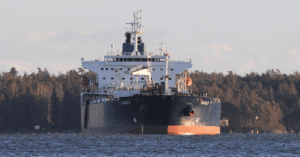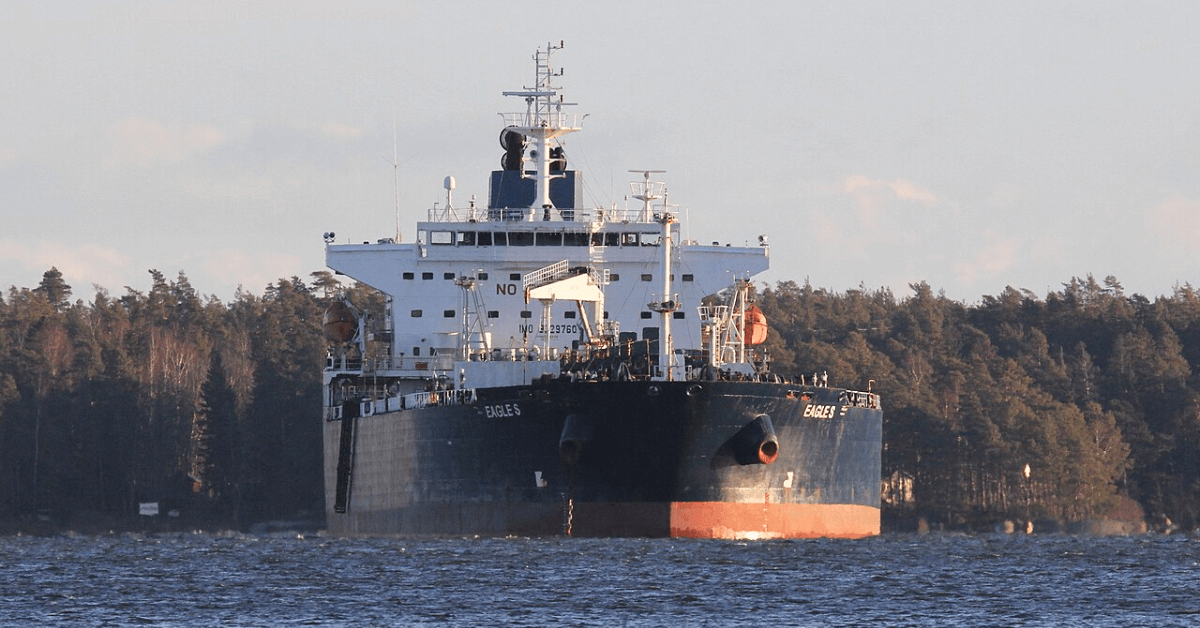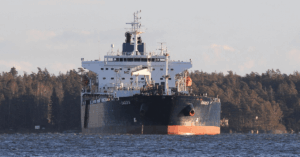
Ukrainian Man Arrested Over Mysterious 2022 Nord Stream Pipelines Explosions
August 22, 2025
World’s Biggest Cruise Ship To Sail On Maiden Voyage From Florida
August 23, 2025

The captain of the tanker Eagle S has defended himself and his crew ahead of a high-profile trial in Helsinki, where they face charges over damage to five subsea power and communication cables between Finland and Estonia.
The incident took place on December 25, 2024, when the 74,000 dwt tanker allegedly dragged its anchor for about 90 kilometres, damaging key undersea connections, including the Estlink 2 power cable.
On August 25, 2025, the Helsinki District Court is set to hear the case against Captain Davit Vadatchkoria, a Georgian national, and his first and second officers, who are Indian nationals. All three have been banned from leaving Finland since the incident.
Prosecutors allege the anchor dragging was intentional. Deputy Prosecutor General Jukka Rappe has said the crew carried out the actions deliberately.
Speaking to Swedish public broadcaster Yle, Vadatchkoria described the incident as a “marine accident.” He said Finnish authorities had tracked his ship on the day of the incident and could have simply called him to check the anchor. According to him, stopping a laden tanker would have taken only five to seven minutes.
He claimed that neither the bridge alarms nor the autopilot system gave any indication of anchor dragging. He said the vessel did not heel, vibrate, or make unusual noises, which would normally alert the crew to a problem. He also stated that the anchor windlass showed no dents, distortions, or soot marks that would indicate uncontrolled release of the anchor.
Vadatchkoria admitted that the tanker lost speed that afternoon but attributed it to strong winds, high waves, and engine problems reported by the chief engineer.
When the Finnish Coast Guard vessel Turva contacted the Eagle S later that evening, it informed the crew that the port anchor chain was out. The captain recalled a “bad feeling” when they pulled up the chain and discovered the anchor was missing.
Despite believing that Finnish authorities lacked jurisdiction in international waters, Vadatchkoria said he followed the Coast Guard’s order to steer into Finnish territory to avoid risking the safety of his crew, vessel, and cargo.
He has accused Finland of carrying out an unsafe boarding operation. He alleged that armed troops descended from helicopters in full combat gear onto his fuel-laden tanker, which carried gasoline and diesel. He described it as a “serious breach of maritime safety,” warning that sparks from static electricity could have caused a disaster.
According to his account, 60 to 70 armed soldiers or police boarded the ship “as if catching terrorists.” He also claimed that he was threatened at gunpoint to move the tanker to a closer anchorage for inspection.
Vadatchkoria said the crew was forced to sleep on the floor of the mess room and was interrogated individually. He also said authorities confiscated phones, cameras, computers, and electronic devices, from the ship.
There were initial reports suggesting that “Russian espionage equipment” might have been aboard the Eagle S. Both prosecutors and investigators later confirmed that no such evidence was found.
Authorities also said they discovered no conspiracy, financial transactions, or communications linking the vessel to the Kremlin or any mission to disrupt Nordic or Baltic infrastructure.
Despite this, prosecutors continue to insist that the cable damage was deliberate.
Vadatchkoria has alleged that Finnish authorities knew the anchor was dragging by 3:02 p.m. on Christmas Day but did not act, even though they could have asked the crew to raise the anchor immediately.
The National Bureau of Investigation (NBI) has declined to comment on his accusations.
Lawyers for the captain and officers have said Finland lacks the legal authority to prosecute since the incident happened outside Finnish territorial waters.
Reference: yle
Source: Maritime Shipping News


